The Indira Gandhi National Open University (IGNOU) assignment system is an essential component of the institution’s distance learning strategy.
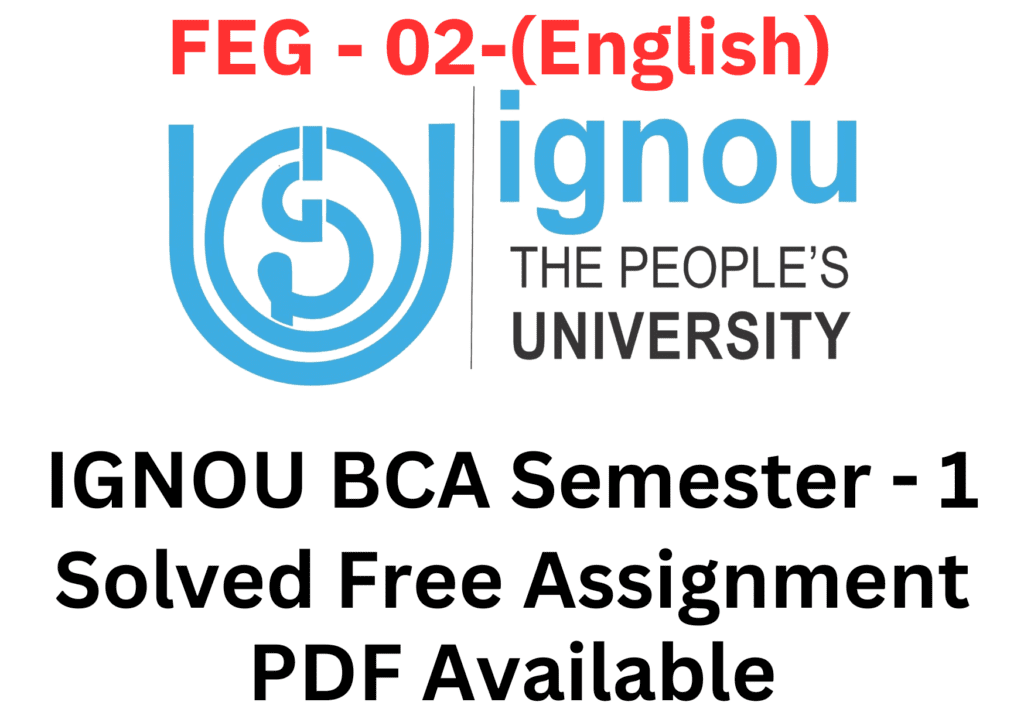
IGNOU assignments allow students to demonstrate their understanding of the course material and apply theoretical concepts to real-life situations.
Assignments are a required component of IGNOU courses. Students have a responsibility to submit assignments for each course in which they are enrolled, usually by a particular time limit.
Each assignment includes detailed instructions for the format, word count, referencing style, and submission rules. Students must follow these rules to guarantee their assignments are accepted.
Assignments frequently consist of a series of questions or assignments related to the course material. These questions may ask students to , solve problems, compose essays, or undertake research.
Assignments carry a particular weight in the overall evaluation of a course. The marks acquired in assignments contribute to the student’s final grade.
Assignment for FEG -02 (English) Is Given Below- Check it out
Course Code : FEG-02 Course
Title : English
Assignment Number : BCA (I)/02/Assignment/2023-24
Maximum Marks : 100
Weightage : 25%
Last Dates for Submission : 31st October, 2023 (For July Session)
: 30th April, 2024 (For January Session)
There are six questions in this assignment which carried 100 marks. Answer all the questions. Please go
through the guidelines regarding assignments given in the Program Guide for the format of presentation.
Attempt all the questions
One day a wonderful plate made of gold fell from Heaven into the court of a temple at Benares; and on
the plate these words were inscribed; “A gift from Heaven to him who loves best.” The priests at once
made a proclamation that every day at twelve o’clock, all who would like to claim the plate should
assemble at the temple, to have their kind deeds judged. Every day for a whole year all kinds of holy
men, hermits, scholars and nobles came, and related to the priests their deeds of charity, and the priests
in solemn council heard their claims. At last they decided that the one who seemed to be the greatest
lover of mankind was a rich man who had that very year given all his wealth to the poor. So they gave
him the plate of gold, but when he took it in his hand, it turned to worthless, lead; though, when he
dropped it in his amazement on to the floor, it became gold again. For another year claimants came; and
the priests awarded the prize three times. But the same thing happened, showing that Heaven did not
consider these men worthy of the gift. Meanwhile a large number of beggars came and lay about the
temple gate, hoping that the claimants who came would give them alms to prove they were worthy of
the golden plate. It was a good time for the beggars, because the pilgrims gave them plenty of money;
but they gave them no sympathy, nor even a look of pity. At last a simple peasant, who had heard
nothing about the plate of gold, came; and he was so touched by the sight of the miserable beggars, that
he wept; and when, he saw a poor blind and maimed wretch at the temple gate, he knelt at his side and
took his maimed hands in his and comforted him with kind words. When this peasant came to the
temple, he was shocked to find it full of men boasting of their kind deeds and quarrelling with the priest.
One priest, who held the golden plate in his hand, seeing the peasant standing there, beckoned to him;
and the peasant came, and knowing nothing about the plate, took it in his hands. At once it shone out
with three times its former splendour, and the priests said : “Son, the gift is yours : for you love best.”
Q1. Read the following passage and make notes in an appropriate format:
Ans- Notes:
Setting: Benares, a temple courtyard
Event: A golden plate falls from Heaven with an inscription: “A gift from Heaven to him who loves best.”
Proclamation: Priests announce a daily gathering at noon for claimants to present their kind deeds to
win the plate.
Participants: Holy men, hermits, scholars, nobles present their charitable acts for judgment.
Decision: After a year, a rich man who gave all his wealth to the poor is deemed the greatest lover of
mankind and awarded the plate. However, it turns to lead in his hands.
Repeats: Process recurs for another year with no worthy recipient; plate still turns to lead.
Beggars’ Presence: Many beggars hope for alms from claimants to prove their worthiness for the plate.
Peasant’s Arrival: A humble peasant, unaware of the plate, is moved to tears by the beggars’ plight. He
comforts a blind and maimed beggar with genuine kindness.
Recognition: Priests, witnessing the peasant’s compassion, invite him to take the plate. It shines brightly
in his hands, indicating his true love for mankind.
Lesson: True love and compassion, exemplified by the peasant, are more valuable than wealth or status.
Q2. Write a summary of the passage and give it an appropriate title.
Ans- In the city of Benares, a golden plate falls from Heaven with an inscription declaring it a gift to the
one who loves best. The priests hold a yearly event where claimants present their deeds of charity to
win the plate. Despite the claims of wealthy and influential individuals, the plate turns to lead in their
hands. Meanwhile, beggars hope to benefit from the generosity of the claimants. Eventually, a humble
peasant, moved by compassion for the suffering beggars, unknowingly wins the plate by comforting a
blind and maimed beggar. The priests recognize his genuine kindness and award him the plate, which
shines with increased splendor in his hands, proving that true love and compassion are the most
valuable virtues.
Q3. Write a paragraph of 100-150 words on any one of the following topics:
a) NEP2020 b) The role of media
Ans-a) The National Education Policy 2020 (NEP 2020) marks a significant overhaul in India’s educational
framework, aiming to transform the country’s education system to meet the challenges of the 21st
century. This policy, approved by the Union Cabinet in July 2020, emphasizes holistic and
multidisciplinary education, aiming to foster critical thinking, creativity, and innovation among students.
NEP 2020 advocates for the integration of technology in education, promoting digital learning and online
resources. It also proposes structural reforms, such as the establishment of a National Education
Commission, the extension of the Right to Education Act, and the implementation of a new pedagogical
and assessment framework. Additionally, NEP 2020 emphasizes inclusivity, aiming to provide equitable
access to quality education for all, regardless of socio-economic background or geographic location.
Overall, the policy represents a comprehensive effort to revitalize India’s education system and prepare
its youth for the challenges and opportunities of the future.
b) The role of media in society is multifaceted and vital, serving as a cornerstone of democracy, a
platform for information dissemination, and a catalyst for social change. Firstly, media acts as a
watchdog, holding those in power accountable by exposing corruption, injustice, and abuse of authority.
Through investigative journalism and reporting, media outlets play a crucial role in promoting
transparency and ensuring government accountability. Moreover, media serves as a forum for public
discourse and debate, facilitating the exchange of ideas and opinions on various social, political, and
economic issues. It provides a platform for marginalized voices to be heard and contributes to the
formation of public opinion. Additionally, media plays a significant role in shaping cultural norms, values,
and attitudes, influencing societal perceptions and behaviors. In the digital age, social media platforms
have further amplified the reach and impact of media, enabling instantaneous communication and
global connectivity. However, media also faces challenges such as misinformation, bias, and
sensationalism, highlighting the importance of responsible and ethical journalism. Overall, the role of
media in shaping public discourse, promoting accountability, and fostering social change cannot be
overstated, making it a cornerstone of modern society.
Q4. You are the Secretary of the Students Union in your college. Write a report in
250 words of a meeting held to discuss the forthcoming Annual Cultural Function.
Ans- Report on Meeting to Discuss Annual Cultural Function
Date: [Insert Date]
Time: [Insert Time]
Location: [Insert Location]
Attendees:
[Your Name], Secretary of the Students Union
[Names of Other Attendees]
Agenda:
Discussion of proposed events for the Annual Cultural Function
Allocation of responsibilities among organizing committee members
Budget allocation and fundraising strategies
Logistics and venue arrangements
Promotion and publicity plans
Summary:
The meeting was convened to plan and organize the forthcoming Annual Cultural Function of our
college. Various proposed events and activities were discussed to ensure a diverse and engaging program
for the event. Suggestions included traditional performances, music concerts, dance competitions,
drama skits, and art exhibitions. It was decided to form subcommittees to oversee different aspects of
the event, including event coordination, publicity, finance, logistics, and security.
Responsibilities were allocated among committee members based on their skills and interests, with clear
deadlines set for task completion. Additionally, strategies for budget allocation and fundraising were
discussed to ensure the smooth execution of the event within the allocated budget.
Logistics and venue arrangements were also addressed, with a focus on securing suitable venues for
each activity, ensuring adequate equipment and facilities, and coordinating with vendors and suppliers.
Furthermore, plans for promoting and publicizing the event were outlined, including social media
campaigns, posters, flyers, and collaborations with local media outlets.
Overall, the meeting was productive, laying the groundwork for a successful and memorable Annual
Cultural Function that will showcase the diverse talents and cultural richness of our college community.
Q5. Write a report in 250 words of an interview you had with Education Minister
of India.
Ans- Report on Interview with Education Minister of India
Date: [Insert Date]
Time: [Insert Time]
Location: [Insert Location]
Interviewer:
[Your Name]
Interviewee:
Honorable Education Minister of India
Purpose:
The interview was conducted to gain insights into the current priorities, initiatives, and challenges in the
field of education in India.
Discussion Highlights:
The interview commenced with a discussion on the government’s vision for transforming the education
system to meet the demands of the 21st century. The Education Minister emphasized the importance of
holistic and multidisciplinary education, focusing on fostering critical thinking, creativity, and innovation
among students. They highlighted key initiatives such as the National Education Policy 2020, aimed at
revamping the curriculum, promoting digital learning, and ensuring equitable access to quality education
for all.
Moreover, the Minister elaborated on efforts to address challenges such as infrastructure development,
teacher training, and improving learning outcomes across the country. They emphasized the need for
collaborative efforts between the government, educational institutions, and other stakeholders to
achieve these objectives effectively.
The discussion also touched upon the role of technology in education, with the Minister highlighting
initiatives to integrate digital tools and online resources into the learning process. Additionally, strategies
for promoting vocational education, skill development, and entrepreneurship were discussed to enhance
employability and empower youth.
Conclusion:
Overall, the interview provided valuable insights into the government’s priorities and initiatives in the
education sector. It underscored the importance of continuous innovation and collaboration in driving
positive change and ensuring inclusive and quality education for all citizens of India.
Interviewer’s Remarks:
The interview with the Education Minister was enlightening and provided a comprehensive
understanding of the government’s vision and strategies for advancing education in India.
Q6. Write a composition of 250-300 words based on any one of the pictures given
below:
Ans- Title -Cricket Stadium
The cricket stadium stands as a testament to the fervor and passion that cricket evokes in the hearts of
millions. With its sprawling expanse of green, meticulously manicured pitch, and imposing stands
towering over the field, the stadium is a symbol of the grandeur and spectacle of the sport.
As spectators begin to fill the stands, a buzz of excitement fills the air. The stadium comes alive with the
vibrant energy of the crowd, their voices rising in unison to chant the names of their favorite players.
Flags flutter in the breeze, and colorful banners proclaiming allegiance to various teams adorn the
stands, adding to the festive atmosphere.
On the field, players go through their warm-up routines, the crack of the bat and the thud of the ball
echoing across the stadium. The tension is palpable as the teams take their positions, ready to do battle
in the ultimate test of skill, strategy, and stamina.
As the match gets underway, every delivery, every run, and every wicket is met with cheers or groans
from the crowd, their emotions riding the highs and lows of the game. The stadium erupts in jubilation with each boundary or wicket, the roar of the crowd reverberating throughout the arena.
Download PDF Of FEG-02 Assignment-
Show More:- ECO-01 (English)IGNOU BCA Semester 1 Free Assignment

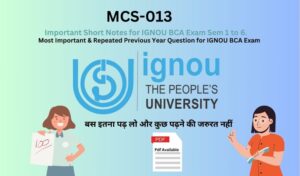
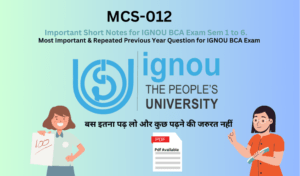
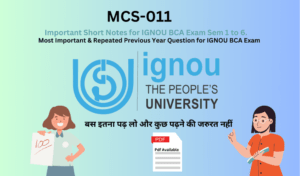

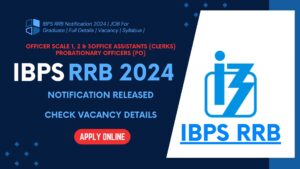
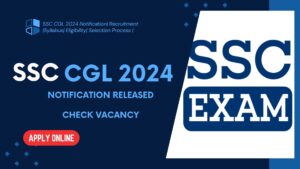

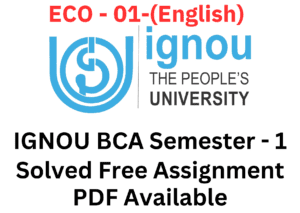
+ There are no comments
Add yours